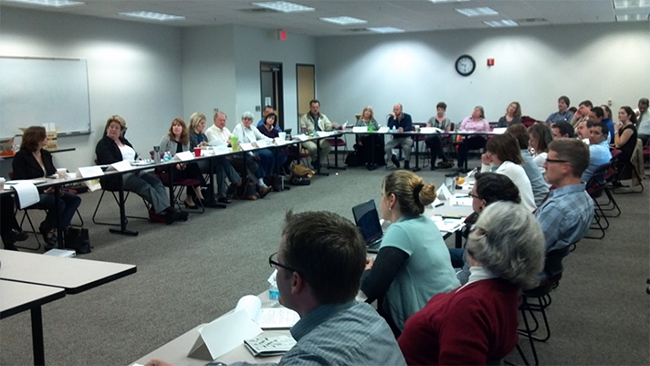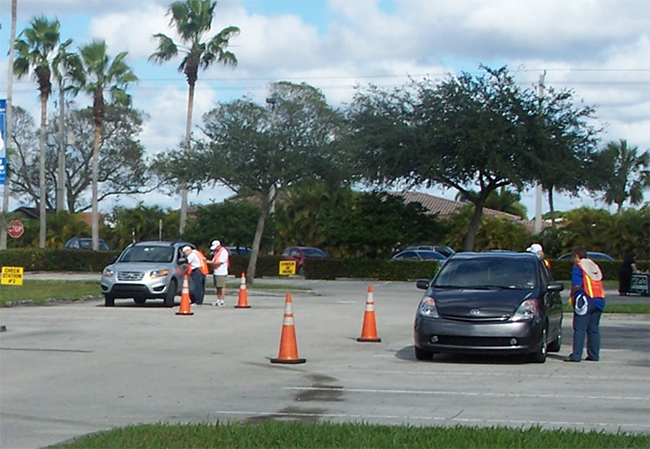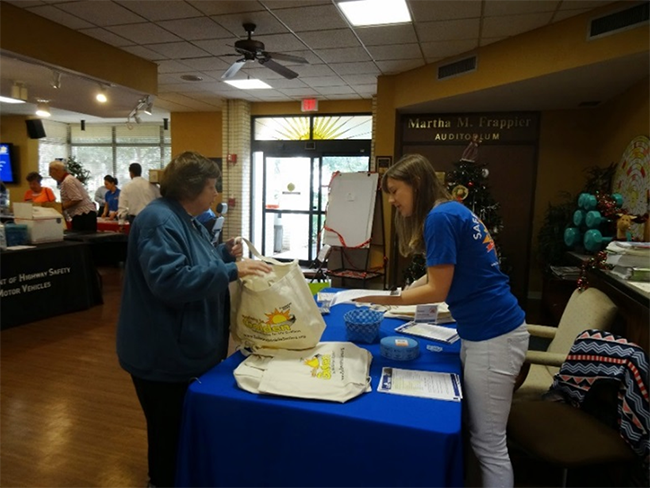Describe the roadway safety situation or state before the new practice was implemented. What was the safety issue, problem, or gap?
Today's older adults are not only living longer; they are continuing to drive longer than any generation in history. Research suggests older adults can expect to outlive their ability to drive safely by seven to ten years. Florida has a significant number of aging road users with 18.2 percent of its population over age 65. This percentage is expected to grow to 27 percent by 2030, a figure substantially higher than the national average of 19.7 percent.
As an increasing number of older adults drive on Florida's roadways or travel the roads as pedestrians, passengers, bicyclists, motorcyclists, or transit riders, the issue of transportation safety becomes a greater public health concern. In 2013, there were 454 fatalities involving drivers age 65 and older, which is over 19 percent of all fatalities.
What were the key challenges that needed to be addressed before the new practice could be implemented?
The Florida Department of Transportation (FDOT) created a Safe Mobility for Life Program within its Traffic Engineering and Operations Office which quickly expanded as an increasing number of stakeholders became involved with the program. The program originally focused on engineering improvements on the state highway system to compensate for the natural changes that occur as people age. Human factors studies were soon incorporated into the program, in conjunction with the Florida State University Department of Psychology, to gain a better understanding of how traffic control devices are comprehended by all age groups prior to implementation. A training course was later developed and tailored to the Federal Highway Administration's (FHWA) Highway Design Handbook for Older Drivers and Pedestrians to address the unique aspects of Florida's transportation system and take into account competing design practices such as Context Sensitive Design/Solutions and Livable Communities. With an ever increasing number of activities associated with the program, FDOT needed to develop a better solution to integrate its various partners into the program.
Describe the new practice.
FDOT partnered with the Pepper Institute on Aging and Public Policy at Florida State University to form a statewide coalition. The Safe Mobility for Life Coalition (SMFLC) consists of 27 agencies and organizations who share responsibilities and interests in aging road user safety and mobility.
Activities developed or supported by the Coalition that have helped Florida achieve reductions in aging road user traffic related fatalities and serious injuries include:
- Roadway and Pedestrian Improvements: Safety countermeasures including larger lettering on signs, advance warning signs, countdown pedestrian signals, etc.
- Dedicated website (safemobilityfl.com): A one-stop website created and maintained by FDOT to put aging road user transportation safety and mobility tools and resources all in one place.
- Florida's Guide for Aging Drivers: This free guide was developed as a printed version of the FLsams website and is designed to help Floridians learn how to continue to safely drive while also sharing information to help prepare and plan ahead to meet their mobility needs after transitioning from driving.
- Find-a-Ride Database: This database, generated by the University of Florida, provides direct access to over 800 local transportation options through the Find-a-Ride page on the FLsams website.
- Aging Road User Survey: This survey conducted in September 2012 and again in 2013 saw an increase in the number of people who had heard about SMFLC as well as an increase in the number of individuals who indicated they were preparing for when they could no longer drive.
- Safe Mobility for Life Resource Center: Coalition materials that promote and educate on aging road user safety and mobility are distributed upon request to all stakeholders, including the guide, checklist, brochures, and tip cards that support the Aging Road User Strategic Safety Plan.
List the key accomplishments that resulted from the new practice. Include the roadway safety improvements.
- The proportion of traffic fatalities in Florida involving drivers ages 65-74 was below the proportion for both the NHTSA Region 4 and the nation during the last three years (2011-2013).
- Broadcasted three focus group tested radio public service announcements targeting urban and rural priority counties in 2014.
- Conducted an Assessment of Health Care Providers and Older Adult Service Organizations research project with results used to develop and distribute educational materials and resources.
What technical and/or institutional changes resulted from the new practice?
The Coalition developed the Aging Road User Strategic Safety Plan, which is incorporated in Florida's Strategic Highway Safety Plan under the At-Risk Drivers Emphasis Area. The Aging Road User Strategic Safety Plan is broken down into 10 key emphasis areas:
- Advocacy and Policy;
- Aging in Place;
- Assessment, Remediation, and Rehabilitation;
- Data Collection and Analysis;
- Licensing and Enforcement;
- Other Road Users;
- Outreach and Education;
- Prevention and Early Recognition;
- Program Management, Evaluation, and Resources; and
- Transitioning from Driving.
The plan includes specific emphasis areas and tracks their progress and implementation to ensure that the overall plan is moving forward.
What benefits were realized as a result of the practice?
- Developed specialized materials that focus on older driver related transportation safety issues.
- Held special events including: an indoor/outdoor interactive Safety is Golden Mobility Fair to provide available local transportation safety and mobility resources to participants; a Transit is Golden safety event to help educate and promote the use of public transportation among older adults by walking to a bus stop and traveling to a local destination; and a Stop on Red safety event in collaboration with Alert Today Florida to promote pedestrian safety.



Contacts
Safe Mobility for Life Program
Florida Department of Transportation
State Traffic Engineering and Operations Office
605 Suwannee Street, MS 36
Tallahassee, Florida 32399-0450
Gail.Holley@dot.state.fl.us
850-410-5414
Pepper Institute on Aging and Public Policy
Safe Mobility for Life Resource Center
636 West Call Street
Tallahassee, FL 32306
Safe-Mobility-For-Life@fsu.edu
850-644-8145
